WATERS OF LIFE
LIFE UNDERWATER
BENTHOS - NUTRITION
![]() FLASH PLAYER IS REQUIRED TO SEE THE CONTENT OF THIS PAGE
FLASH PLAYER IS REQUIRED TO SEE THE CONTENT OF THIS PAGE
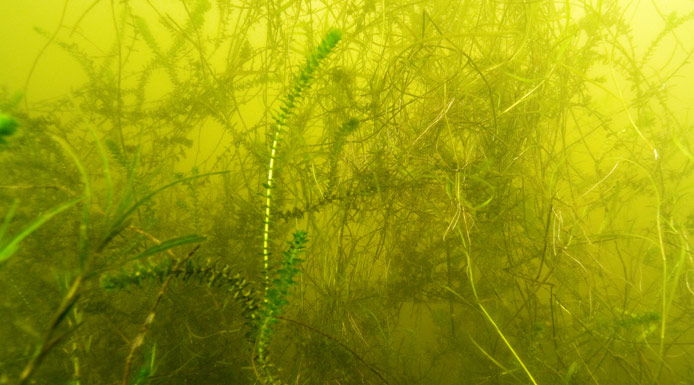
Benthic organisms are an important link in the food chain of lakes and rivers.

Carp
They are eaten by many other organisms, including insects, fish and even some birds, and thus are vital in circulating energy through the ecosystem.

Marsh Wren
The Marsh Wren feeds on aquatic insects.

Duckling
The tiny crustaceans are part of the diet of duckling.

Common Moorhen
The Common Moorhen eats insects and gastropods.

Different species of benthic organisms have different diets.

Damselflies
Predators feed on other animals. They are usually good hunters and their mouthparts are adapted to their diet.
VIDEO - 0 min 53 s
Some are active hunters that tirelessly pursue their prey. Mites can be formidable predators. This hemipteran just had a narrow escape!
This page contains videos that require Javascript and Adobe Flash Player to be activated. If you wish not to activate these functions, we offer pictures from the original videos.
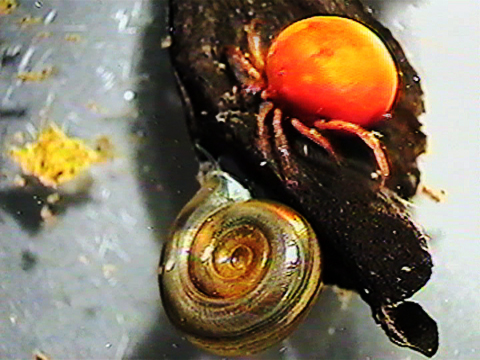
VIDEO - 0 min 09 s
Next, the mite attacks a gastropod, which rapidly retreats into its shell.
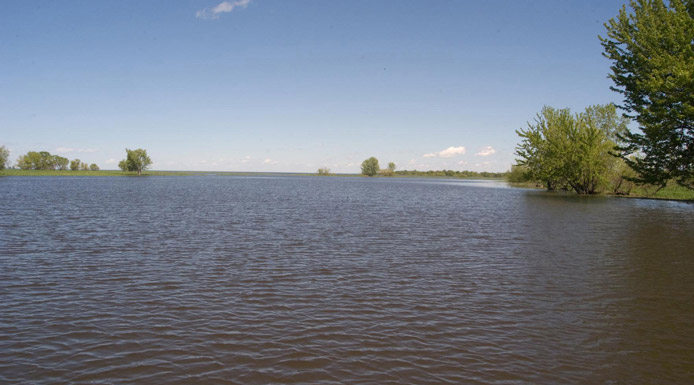
Others are ambush predators. They wait patiently for prey to pass nearby, quickly seize it.
This page contains videos that require Javascript and Adobe Flash Player to be activated. If you wish not to activate these functions, we offer pictures from the original videos.
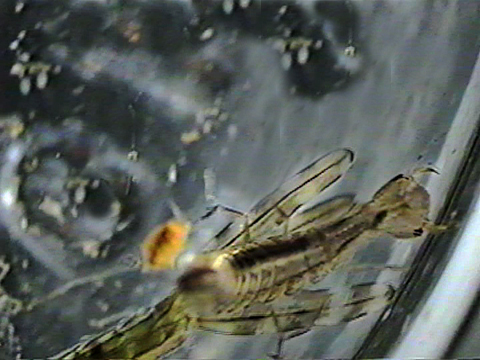
VIDEO - 0 min 08 s
The diving beetle uses its hooked mandibules to grip its prey and inject a toxin that liquefies it. The beetle then sucks up the insides of its prey and discards the empty shell.
Diving beetles avoid being preyed on in their turn by secreting a substance that makes them inedible.
This page contains videos that require Javascript and Adobe Flash Player to be activated. If you wish not to activate these functions, we offer pictures from the original videos.
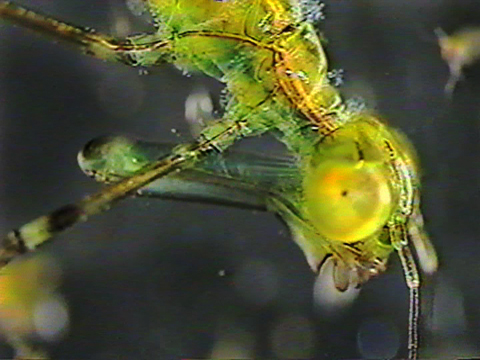
VIDEO - 0 min 09 s
Odonates possess a formidable weapon. Their lower jaw has evolved in a retractable mask.
This page contains videos that require Javascript and Adobe Flash Player to be activated. If you wish not to activate these functions, we offer pictures from the original videos.

VIDEO - 0 min 08 s
These ambush predators will lay on a plant and remain completely immobile until a prey animal passes near.
This page contains videos that require Javascript and Adobe Flash Player to be activated. If you wish not to activate these functions, we offer pictures from the original videos.

VIDEO - 0 min 25 s
The mask shoots out at a surprising speed and grabs the prey, which is immediately devoured. The mask then returns to its original position, ready for the next attack.
This page contains videos that require Javascript and Adobe Flash Player to be activated. If you wish not to activate these functions, we offer pictures from the original videos.

VIDEO - 0 min 08 s
Hemipterans are stinging insects. They use their rostrum to pierce the tissues of prey animals and inject an enzyme that liquefies their tissues, which are then sucked through the rostrum and consumed..
This page contains videos that require Javascript and Adobe Flash Player to be activated. If you wish not to activate these functions, we offer pictures from the original videos.
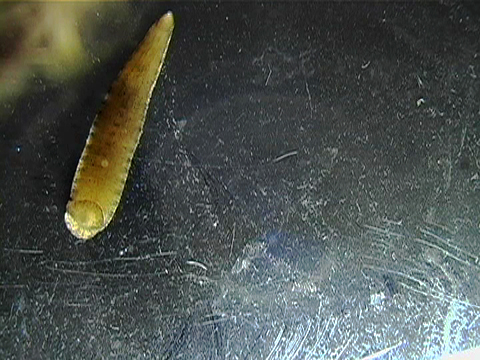
VIDEO - 0 min 10 s
Leeches are either predatory or parasites. They drink the blood of fish, amphibians and mammals.

Browsers are benthic organisms that consume the microscopic algae growing on rocks and aquatic plants.
This page contains videos that require Javascript and Adobe Flash Player to be activated. If you wish not to activate these functions, we offer pictures from the original videos.
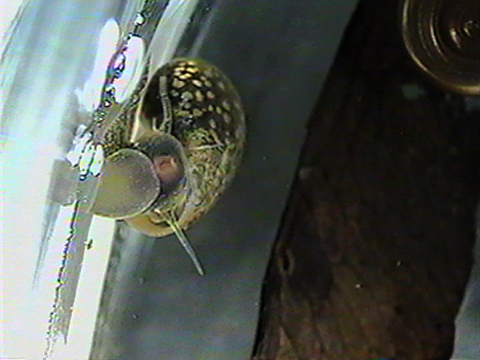
VIDEO - 0 min 15 s
Gastropods have a tongue, called a radula, equipped with many tiny teeth.
This page contains videos that require Javascript and Adobe Flash Player to be activated. If you wish not to activate these functions, we offer pictures from the original videos.

VIDEO - 0 min 25 s
They use their tongue to scrape algae from various surfaces.

Filter-feeders use a variety of techniques to trap food floating in the water.
This page contains videos that require Javascript and Adobe Flash Player to be activated. If you wish not to activate these functions, we offer pictures from the original videos.

VIDEO - 0 min 39 s
Many caddisfly larvae collect and feed on all kinds of debris.
This page contains videos that require Javascript and Adobe Flash Player to be activated. If you wish not to activate these functions, we offer pictures from the original videos.
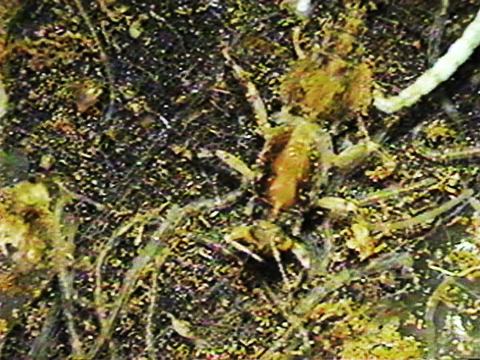
VIDEO - 0 min 35 s
Mayfly larvae generally pick up nearby detritus and feed on it.

Mussels create a current between their shells. Particles are filtered out by the gills and brought to the mouth by small cilia.
This page contains videos that require Javascript and Adobe Flash Player to be activated. If you wish not to activate these functions, we offer pictures from the original videos.

VIDEO - 0 min 11 s
Amphipods are omnivorous. They eat plants, especially algae, animals and detritus. They will even eat the young of their own species.
